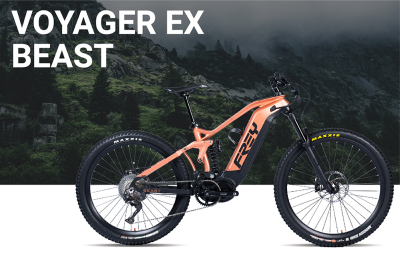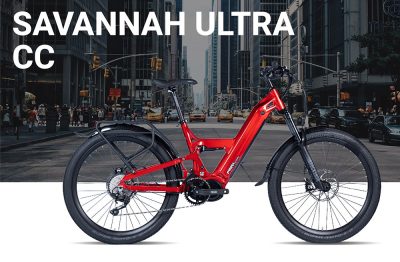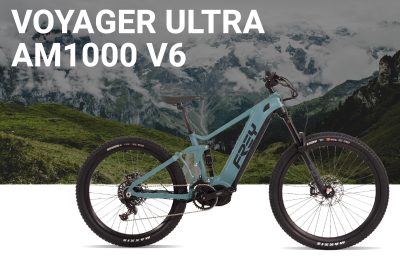Electric Bike Terms
With this somewhat new technology comes a whole new definition of terms associated with the eBike. If you are new to eBikes, don’t stress we have compiled alist that will help get you up to speed so you can ask the right questions when making a purchase or even after a purchase when you might need servicing or repairs.
Pedelec (Pedal Electric Cycle)
A pedelec (from the pedal electric cycle) or EPAC (electronically power assisted cycle), is a type of low-powered electric bicycle where the rider’s pedaling is assisted by a small electric motor. However, unlike some other types of e-bikes, pedelecs are classified as conventional bicycles in many countries by road authorities rather than as a type of electric moped. Pedelecs include an electronic controller which cuts power to the motor when the rider is not pedaling or when a certain speed – usually 25 km/h (16 mph) or 32 km/h (20 mph) – is reached. Pedelecs are useful for people who ride in hilly areas or in strong headwinds. While a pedelec can be any type of bicycle, a pedelec city bike is very common.
Battery capacity (Wh)
The capacity of a battery is measured in watt-hours (Wh). There are many brands and models on the market, and all have different characteristics. You’ll find anything from a basic 250 Wh battery to robust 1,000 Wh double-battery solutions. As a general rule, we can say that the higher the watt-hour rating of a battery, the higher its range. The weight of the battery is proportional to its capacity.
Torque
Very important. Torque is measured in Newton meters (Nm) and describes the rotational power of the motor that is used to assist the rider while pedaling. The higher the torque, the stronger the support the rider gets. Going up a hill? The torque is what will assist you in getting there.
On average, lower-powered e-bikes usually have a torque of around 50 Newton meters whereas higher-powered ones typically have 80 Newton meters or more going up to 120 Newton meters. For climbing steep hills, a torque of at least 70 Newton meters or more is recommended. There are very few electric bikes that have the torque a big guy needs to get up a hill, this motor actually has 160Nm which is among the strongest if not the strongest.
Motor Power
Attempting to compare e-bike power ratings is a great way to lose your sanity. That’s because “rated power,” the metric some manufacturers use, doesn’t equal a motor’s actual power output or maximum potential power output. The actual power output of a motor depends entirely on how heavily it is loaded in a given situation and the maximum electrical power that the controller lets flow into the motor.
The power rating might indicate how much power you’re getting for a specific amount of time, although there’s no universal standard for peak or rated power duration. That could be 10 seconds or 30 seconds. Some motors quote peak power at 750 watts.
Battery range
Battery range depends on many factors: battery charge status, capacity, which support level you’re using, body weight, backpack weight, gradient, air temperature, cadence, terrain, tire pressure, tires, etc., etc. Because so many factors can influence the range of a battery, it is impossible to settle for a standard range-per-charge rule. The same goes for the elevation gain you can squeeze out of a fully-charged battery.
Walk-assist
The walk-assist function can be activated with a button on the handlebar-remote. When this is activated, the motor pushes the bike at a speed of up to 3-4 mph without you having to pedal. This saves you precious energy in walking sections.
Gear ratio
The gear ratio refers to the ratio between the front chainring and rear sprocket. To be able to pedal at different speeds with the same cadence, the gear ratio must be adjusted by changing the gears.
Gear range
The gear range is the difference between the highest and lowest available gears. If we take the eMTB-specific SRAM EX1 group as an example, its 8-speed/ 11 to 48 t cassette has a gear range of 436%. You can work the gear ratio out yourself: 48 (largest sprocket): 11 (smallest sprocket) x 100 = 436%.
Travel
Travel is the amount your fork or rear suspension can compress and extend. The longer the travel is, the better the suspension can compensate for the irregularities of the trail. For a comfortable ride on an eMTB we recommend travel of around 150 mm.
Sag
Also known as “negative travel,” the sag is the amount a fork or rear shock compresses under your body weight whilst sitting still on the bike. Sag allows the suspension to compensate for the imperfections of the trail for more traction and better bike control. The sag sits typically between 20% and 30% of the total travel, depending on riding style.
Rebound damping
The rebound damping allows you to adjust the speed at which your fork or shock extends after being compressed. If the spring elements bounce back too quickly (low rebound damping) the bike will feel sketchy and uncontrolled. Too much rebound damping, on the other hand, can cause the spring to recover too slowly. In this case, you’ll end up using only part of the travel and riding with a compressed fork when you hit multiple bumps.
Compression
Compression settings allow you to adjust the sensitivity of your fork or rear shock. Some models feature a low-speed compression setting which controls slower movements such as braking. Additionally, high-speed compression controls how the suspension behaves with fast impacts.
Dropper Seatpost
A dropper seatpost can be adjusted in height.



